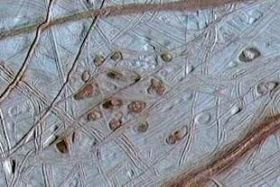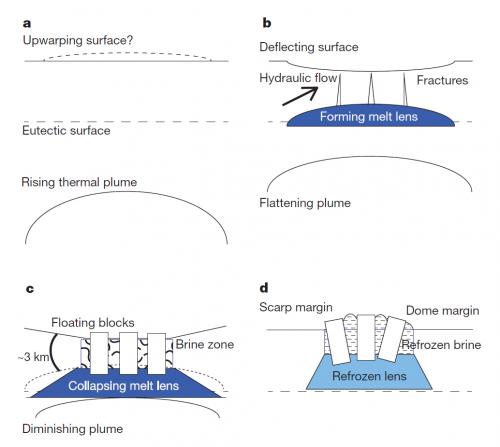 According to scientists from the University of Texas at Austin –a pleasant city by the way– as well as other contributing scientists, they’ve discovered what they believe to be a large body of liquid water on Jupiter’s moon Europa. The body of water is so large, they compare it to the North American Great Lakes. That’s huge!
According to scientists from the University of Texas at Austin –a pleasant city by the way– as well as other contributing scientists, they’ve discovered what they believe to be a large body of liquid water on Jupiter’s moon Europa. The body of water is so large, they compare it to the North American Great Lakes. That’s huge!
What these findings tell us, is that under the thick ice shell there could be life underneath these oceans given the behavior of the observed pockets of upwelled ocean water. But why listen to me struggle in explaining this scientific stuff. Read on for a more “sciency” explanation. Oh hey, maybe this is where we are supposed to resurrect the dead?
The water could represent a potential habitat for life, and many more such lakes might exist throughout the shallow regions of Europa’s shell, lead author Britney Schmidt, a postdoctoral fellow at The University of Texas at Austin’s Institute for Geophysics, writes in the journal Nature.
Further increasing the potential for life, the newly discovered lake is covered by floating ice shelves that seem to be collapsing, providing a mechanism for transferring nutrients and energy between the surface and a vast ocean already inferred to exist below the thick ice shell.
This graphic illustrates the four-step process for building "chaos terrains" on the surface of Jupiter's icy moon Europa. Image Credit:NASA/University of Texas at Austin/Johns Hopkins University Applied Physics Laboratory/ Lunar and Planetary Institute
“One opinion in the scientific community has been, ‘If the ice shell is thick, that’s bad for biology — that it might mean the surface isn’t communicating with the underlying ocean,’ ” said Schmidt. “Now we see evidence that even though the ice shell is thick, it can mix vigorously. That could make Europa and its ocean more habitable.”
The scientists focused on Galileo spacecraft images of two roughly circular, bumpy features on Europa’s surface called chaos terrains. Based on similar processes seen here on Earth — on ice shelves and under glaciers overlaying volcanoes — the researchers developed a four-step model to explain how the features form on Europa. It resolves several conflicting observations, some of which seemed to suggest that the ice shell is thick and others that it is thin.
“I read the paper and immediately thought, yes, that’s it, that makes sense,” said Robert Pappalardo, senior research scientist at NASA’s Planetary Science Section who did not participate in the study. “It’s the only convincing model that fits the full range of observations. To me, that says yes, that’s the right answer.”
Read the rest of the article over at Physorg.
These new studies bring promise in finding life on another planet. Microscopic or gigantic, life outside planet Earth would be a refreshing reminder as to why we need to keep funding space programs all over the world. Can you imagine a world where children get to visit the oceans of Europa and get a chance to interact with life from another planet?





